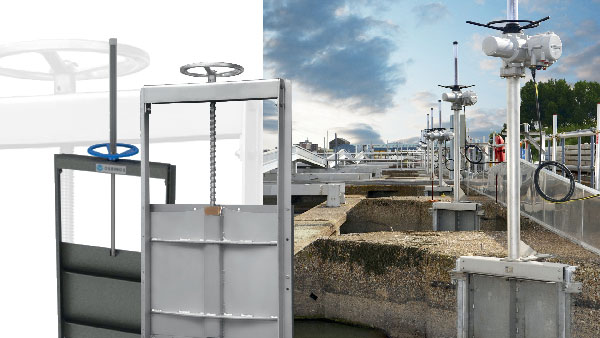In water management, irrigation, hydroelectric power, and wastewater treatment systems, penstock valves (also known as sluice gates or channel gates) are essential for controlling the flow of water. Unlike conventional industrial valves such as ball or gate valves, penstocks are designed for large flow channels and often used in open water systems.

Table of Contents
ToggleWhat is a Penstock Valve?
A penstock valve is a sluice-type flow control device that uses a flat or circular gate (or slide) to regulate or completely stop the flow of water in open channels, reservoirs, dams, or pipelines.
Typically square or rectangular in shape
Operated by a spindle/handwheel, electric actuator, or hydraulic cylinder
Installed vertically or horizontally depending on the application
In hydroelectric plants, the term penstock also refers to the large conduit that carries water to turbines — in which case penstock valves act as critical safety and flow control components.
How Do Penstock Valves Work?
The working principle is straightforward:
A gate or plate moves up and down within a frame.
When lowered, the plate seals against the seating surface, blocking water flow.
When raised, water passes freely through the opening.
The movement can be manual (handwheel/gear) or automated (electric/hydraulic actuator), depending on the system requirements.
Types of Penstock Valves
1. By Installation Orientation
Wall-Mounted Penstocks – Installed on a concrete wall or channel for controlling flow in wastewater plants.
Channel Penstocks – Used in irrigation channels and water treatment basins.
Pipeline Penstocks – Installed in pressurized conduits, often in hydropower projects.
2. By Shape
Rectangular Penstocks – Common in canals, reservoirs, and flood control.
Circular Penstocks – More suitable for pipelines and pressurized systems.
3. By Operation Method
Manual Penstocks – Simple handwheel or spindle, used in small installations.
Motorized/Electric Penstocks – For automated control in treatment plants.
Hydraulic Penstocks – Heavy-duty, used in dams and hydropower stations.
Applications of Penstock Valves
✅ Hydropower Plants – Control water entering turbines, ensuring safe operation.
✅ Water Treatment Plants – Regulate inflow/outflow in basins and channels.
✅ Irrigation Systems – Manage water distribution in agricultural canals.
✅ Flood Control & Drainage – Prevent backflow and regulate stormwater.
✅ Wastewater Management – Isolate sections of treatment facilities.
Advantages of Penstock Valves
Large flow handling – Designed for big channels and high water volumes.
Simple design – Fewer moving parts, long service life.
Flexible operation – Can be manual or automated.
Reliable sealing – Modern designs use rubber or stainless-steel seats for tight shutoff.
Cost-effective for large water management systems compared to industrial valves.
Conclusion
Penstock valves are indispensable in water management, hydroelectric power, and wastewater treatment. They provide a simple, robust, and efficient solution for controlling large flows of water, where traditional industrial valves would not be practical.
Whether in a hydropower dam or a municipal wastewater plant, penstock valves ensure safe, efficient, and reliable flow regulation.
